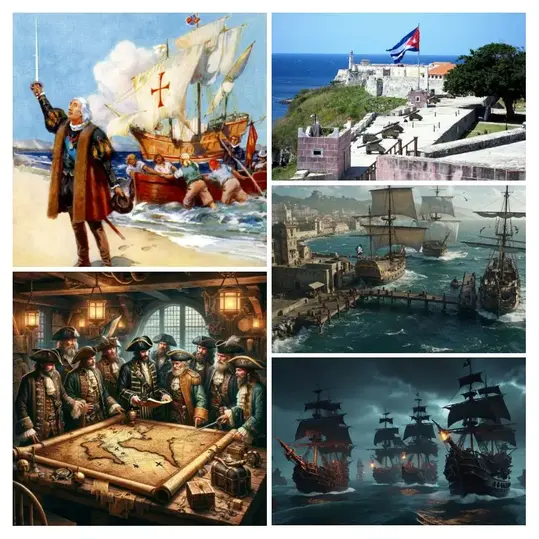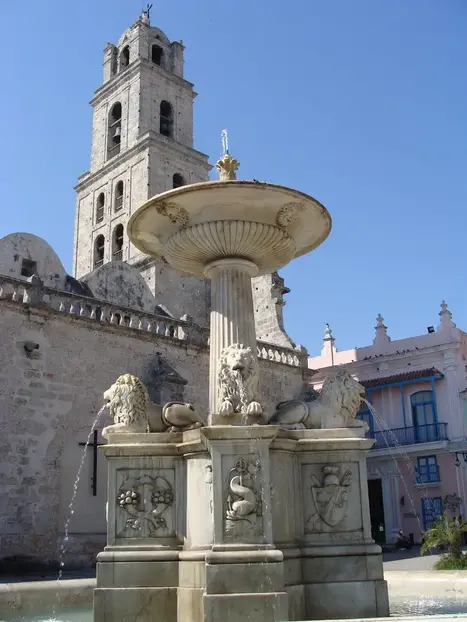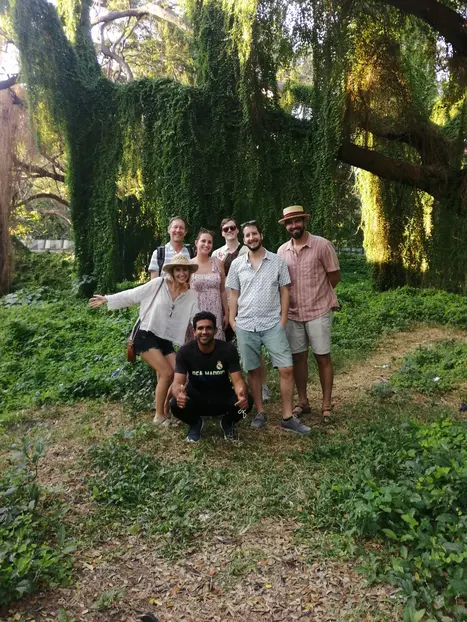







Havana, gateway to the seas of colonial Spain.
Tour description
We will begin in the very place that would mark the economy of the capital since long ago , since in 1561, the Spanish crown would allow the fleet system here in Havana, given its geographical position. So the trade generated by these vessels on Cuban soil, plus the need for repair of these large ships, also gave rise to it being called Puerto de Cárdenas, because it was ideal for careening.
And although this Plaza de San Francisco de Asís was not the first to be built, it was the one that marked the economic boom of all the plazas and the city within the walls, because it was the first place to be set foot on by all the crew who wanted or needed to enter the town.
It is there in that square, which had the second tallest building in all of Cuba at only 42 meters , a fountain that represents the Spanish empire.
From that point we will imagine and live the history, as well as giving an ending to the entire route of the other squares, with their streets, current customs, people, buildings that mark a before but whose current use evokes a present, I will show you the history that walks, because these squares are full of more than magic, of an everyday walk, and of a living royalty that calls the walker and invites him to meditate.
Old Square: This square has a harmonious architecture unique in Cuba, with its different architectural styles, a viewing point established in one of its buildings from 1933.
From here we will move towards the most beautiful and oldest of its squares: Plaza de Armas, built before the first half of the 16th century, this most complete square silently keeps the pride of being the witness of the three powers that the island has seen.
Cathedral Square : perhaps not for everyone, but for many it is the most beautiful square. The ashes of the great Admiral Christopher Columbus rested here for 102 years, until the end of Spanish domination in 1898.
Each and every square and street where we are will be lived among laughter, surprises, and a taste of wonder, because here history is alive.
What will we see on this tour?





